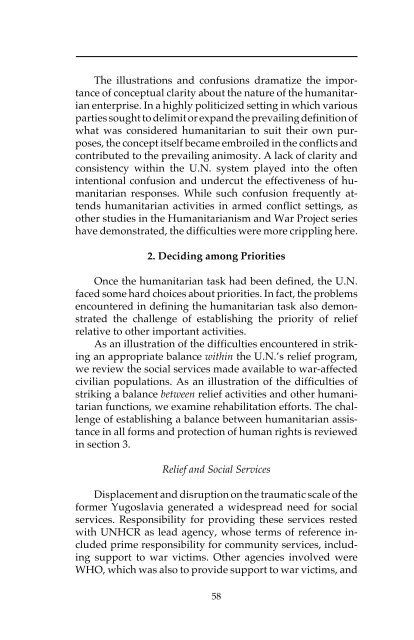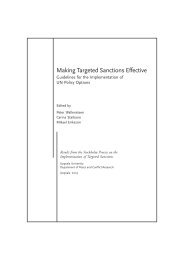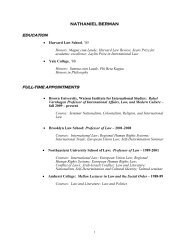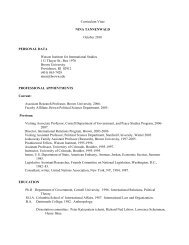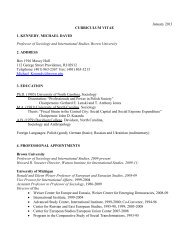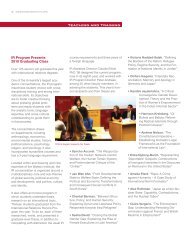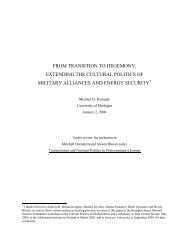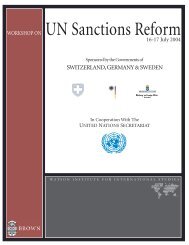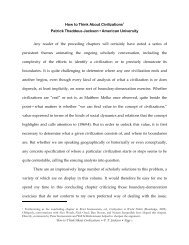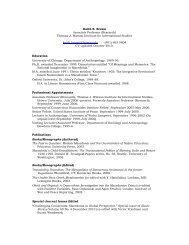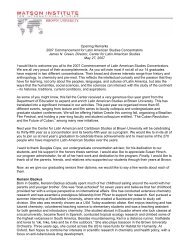op 18 front pages-converted - The Watson Institute for International ...
op 18 front pages-converted - The Watson Institute for International ...
op 18 front pages-converted - The Watson Institute for International ...
Create successful ePaper yourself
Turn your PDF publications into a flip-book with our unique Google optimized e-Paper software.
<strong>The</strong> illustrations and confusions dramatize the importance<br />
of conceptual clarity about the nature of the humanitarian<br />
enterprise. In a highly politicized setting in which various<br />
parties sought to delimit or expand the prevailing definition of<br />
what was considered humanitarian to suit their own purposes,<br />
the concept itself became embroiled in the conflicts and<br />
contributed to the prevailing animosity. A lack of clarity and<br />
consistency within the U.N. system played into the often<br />
intentional confusion and undercut the effectiveness of humanitarian<br />
responses. While such confusion frequently attends<br />
humanitarian activities in armed conflict settings, as<br />
other studies in the Humanitarianism and War Project series<br />
have demonstrated, the difficulties were more crippling here.<br />
2. Deciding among Priorities<br />
Once the humanitarian task had been defined, the U.N.<br />
faced some hard choices about priorities. In fact, the problems<br />
encountered in defining the humanitarian task also demonstrated<br />
the challenge of establishing the priority of relief<br />
relative to other important activities.<br />
As an illustration of the difficulties encountered in striking<br />
an appr<strong>op</strong>riate balance within the U.N.’s relief program,<br />
we review the social services made available to war-affected<br />
civilian p<strong>op</strong>ulations. As an illustration of the difficulties of<br />
striking a balance between relief activities and other humanitarian<br />
functions, we examine rehabilitation ef<strong>for</strong>ts. <strong>The</strong> challenge<br />
of establishing a balance between humanitarian assistance<br />
in all <strong>for</strong>ms and protection of human rights is reviewed<br />
in section 3.<br />
Relief and Social Services<br />
Displacement and disruption on the traumatic scale of the<br />
<strong>for</strong>mer Yugoslavia generated a widespread need <strong>for</strong> social<br />
services. Responsibility <strong>for</strong> providing these services rested<br />
with UNHCR as lead agency, whose terms of reference included<br />
prime responsibility <strong>for</strong> community services, including<br />
support to war victims. Other agencies involved were<br />
WHO, which was also to provide support to war victims, and<br />
58


